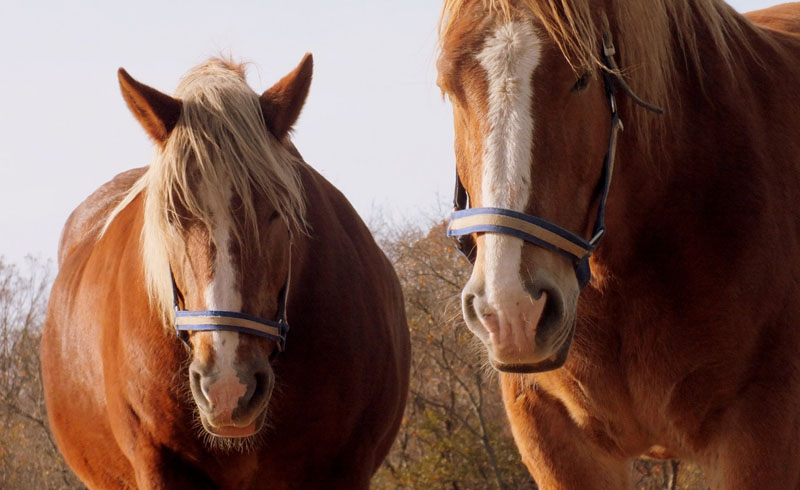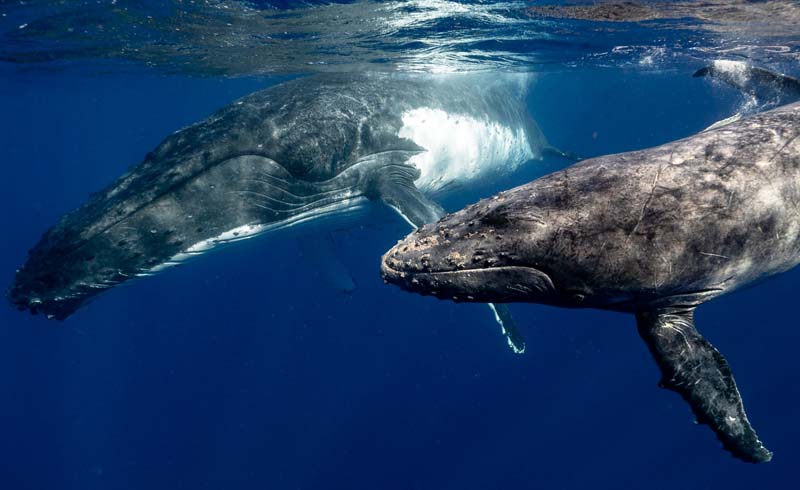Eagles are undoubtedly some of the most impressive birds in the world, with their majestic wings and keen eyesight that allows them to detect prey from kilometers away.
But did you know that there are different types of eagles around the world, each with their own unique characteristics and habitats?
From the iconic Bald Eagle of North America to the ferocity of the Harpy Eagle in the tropical jungles of South America, in this article, we will take you on an exciting journey through the different types of eagles that exist.
Get ready to discover their habitats, behaviors, and physical characteristics that make these birds a wonder of nature.
Bald Eagle (Haliaeetus leucocephalus)

The bald eagle is a large and powerful eagle species that inhabits North America. It is known for its dark body and distinctive white head.
Bald eagles mainly feed on fish, water birds, and mammals that live in or near water. They are solitary and territorial birds and build large nests in trees near water. Bald eagles have a wingspan of up to 2.5 meters and can weigh up to 6.5 kg.
Despite being an endangered species in the past due to pollution and loss of their natural habitat, the population of bald eagles has significantly increased thanks to conservation efforts. Nevertheless, the bald eagle remains one of the most emblematic and majestic birds in the world and an important indicator of the health of the aquatic environment.
Golden Eagle (Aquila chrysaetos)

The Golden Eagle (Aquila chrysaetos) is a large and powerful eagle species that inhabits mountainous and forested regions around the world, including North America, Europe, Asia, and Africa. It is known for its strength, speed, and keen eyesight.
The Golden Eagle is one of the largest eagles in the world and can measure up to a meter in length and have a wingspan of up to 2.5 meters. Its plumage is dark brown with golden tones on the nape and wings, and it has a large head with a curved beak and sharp claws.
Golden eagles mainly feed on mammals such as rabbits, deer, and mountain goats, but also hunt birds and reptiles. They are solitary and territorial birds and build large nests on cliffs or in trees.
The population of golden eagles is endangered due to the loss of their natural habitat and illegal hunting. Nevertheless, the Golden Eagle remains one of the most majestic and exciting birds in the world.
Osprey (Pandion haliaetus)

The Osprey is a species of eagle that can be found in coastal and freshwater regions worldwide. It is one of the few species of eagles that primarily feed on fish. It is a dark bird with a white head and a curved and sharp beak.
Ospreys are known for their ability to dive into the water and catch fish with their claws. They can often be seen flying over the water, searching for prey. When they detect a fish, they dive into the water and use their powerful claws to grab the fish and bring it to the shore.
These eagles are solitary birds and build large nests in trees near the water. They are migratory and can be found worldwide. Ospreys are considered an important indicator of the health of the aquatic environment, as they only inhabit clean and healthy areas.
Although the population of Ospreys has recovered in many parts of the world, they still face threats such as pollution, habitat loss, and illegal hunting. Nevertheless, the Osprey remains an emblematic and fascinating species of the world's fauna and a symbol of the importance of conserving the aquatic environment.
Harpy Eagle (Harpia harpyja)
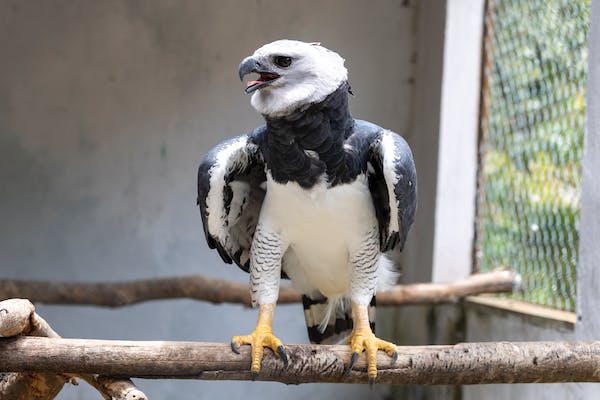
The Harpy Eagle is a large and powerful eagle species that inhabits the tropical forests of Central and South America. It is known for its dark body and prominent crest on the head.
Harpy eagles are fierce predators that mainly feed on monkeys, sloths, and other mammals. They are known for their sharp eyesight, strength, and ability to hunt in the canopy of the forest. They are solitary birds and build large nests in trees, which can measure up to 1.5 meters in diameter and 1.2 meters in height.
Despite their large size, the population of Harpy Eagles is endangered due to the loss of their natural habitat and illegal hunting. Nevertheless, the Harpy Eagle remains one of the most impressive and majestic birds in the world. It is an important indicator of the health of the tropical forest ecosystem and a symbol of the importance of conservation of natural habitats.
White-tailed Eagle (Haliaeetus albicilla)

The White-tailed Eagle is a species of large and powerful eagle that inhabits Europe, Asia, and North America. It is known for its dark brown body and distinctive white head and tail.
White-tailed Eagles primarily feed on fish, water birds, and mammals that live in or near water. They are solitary and territorial birds and build large nests in trees near the water. White-tailed Eagles have a wingspan of up to 2.5 meters and can weigh up to 7 kg.
Despite their large size, the population of White-tailed Eagles is endangered due to pollution, loss of their natural habitat, and illegal hunting. Nevertheless, the White-tailed Eagle remains one of the most emblematic and majestic birds in the world. It is an important indicator of the health of the aquatic environment and a symbol of the importance of conserving natural habitats.
Eastern imperial eagle (Aquila heliaca)

The Eastern imperial eagle (Aquila heliaca) is a large and powerful eagle species that inhabits Eurasia, including Eastern Europe, Russia, and Central Asia. It is known for its dark body and distinctive golden head.
Eastern imperial eagles primarily feed on mammals such as rabbits, hares, and squirrels, as well as birds and reptiles. They are solitary and territorial birds and build large nests in trees near water. Eastern imperial eagles have a wingspan of up to 2.5 meters and can weigh up to 6.5 kg.
The population of Eastern imperial eagles is endangered due to the loss of their natural habitat and illegal hunting. Nevertheless, the Eastern imperial eagle remains one of the most emblematic and majestic birds in the world. It is an important indicator of the health of the ecosystems of the regions where it inhabits and a symbol of the importance of conserving natural habitats.
Short-toed snake eagle (Circaetus gallicus)
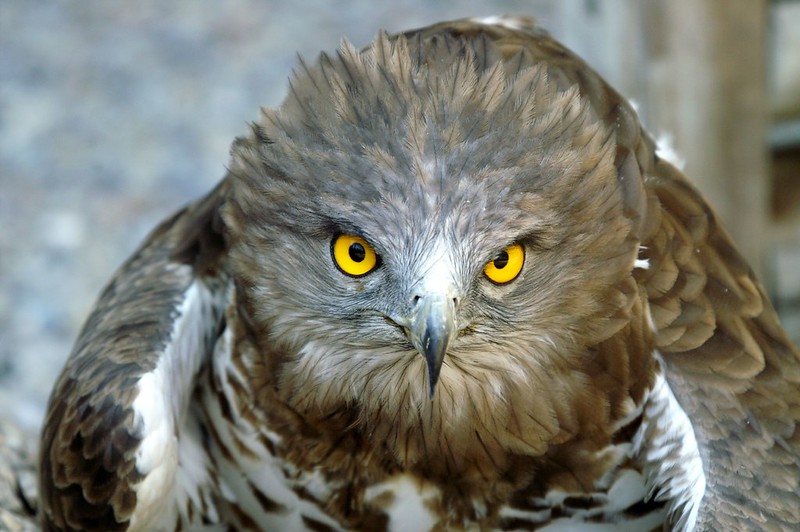
The short-toed snake eagle (Circaetus gallicus) is a species of large and powerful eagle that inhabits wooded and mountainous regions of Europe, Asia, and Africa. It is known for its dark body and distinctive head with a curved beak and sharp claws.
Short-toed snake eagles mainly feed on snakes (hence its name), but they also hunt other reptiles and small mammals. They are solitary and territorial birds and build large nests in trees. Short-toed snake eagles have a wingspan of up to 2 meters and can weigh up to 2 kg.
Although not as well-known as other species of eagles, the short-toed snake eagle is one of the most fascinating and distinctive birds in the world. It can often be found in wooded and mountainous habitats, where it plays an important role in regulating snake populations. The population of short-toed snake eagles is in danger due to the loss of their natural habitat and illegal hunting, making the conservation of this species even more important.
The Bateleur Eagle (Terathopius ecaudatus)
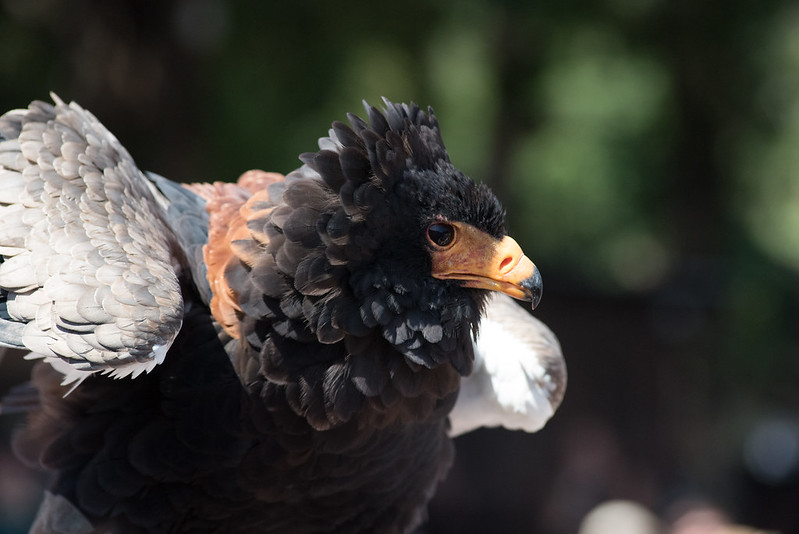
The Bateleur Eagle is a species of accipitrid bird in the family Accipitridae, found in sub-Saharan Africa. It is the only species in the genus Terathopius. With a wingspan of up to 2 meters and a length of 60 to 70 cm, it is one of the largest eagles in Africa.
The Bateleur Eagle's plumage is mainly dark brown, with white patches on the chest and tail. Its head is grayish and it has a strong, curved beak. It feeds mainly on small mammals, such as rodents and hares, as well as birds and reptiles.
The Bateleur Eagle is a fairly common species in its distribution range, which extends from Senegal to Ethiopia and Tanzania. However, the species has declined in some areas due to habitat loss and poaching. It is currently classified as "Least Concern" by the International Union for Conservation of Nature (IUCN).
Despite its size, the Bateleur Eagle is an agile and fast bird that adapts well to various habitats, from savannas to forests and mountain areas. It is known for its long and majestic flights, and for its ability to hunt while flying.
The Black-and-white Hawk-Eagle (Spizaetus melanoleucus)
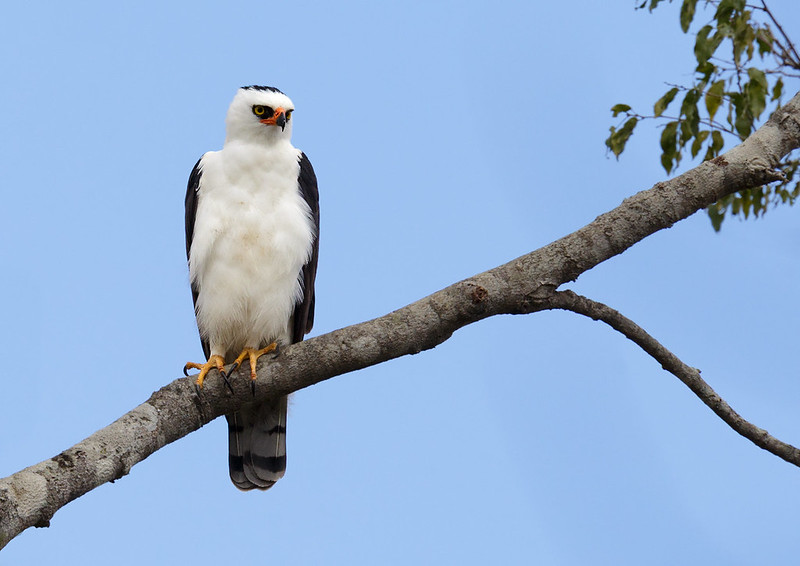
Also known as the Black-and-white Hawk-Eagle, it is a species of bird of prey in the Accipitridae family. It is found in Central and South America, from Mexico to Argentina. It is one of the largest eagles in Latin America, measuring 70 to 82 cm in length and with a wingspan of up to 1.5 meters.
The plumage of the Black-and-white Hawk-Eagle is blackish-blue on the upper part, with a white head and neck and a white band on the tail. Juveniles have dark brown plumage and take several years to acquire the adult plumage. This species feeds on a variety of prey, including monkeys, sloths, birds, and snakes.
The Black-and-white Hawk-Eagle is found in humid forests and mountains of the neotropical region. It is a solitary and territorial species, and reproduces once a year. It builds its nest in tall trees and usually lays two eggs.
Although the Black-and-white Hawk-Eagle is not endangered, its population has declined in some areas due to habitat loss and poaching. The species is protected in many countries of its distribution range and is considered an important indicator of the health of the forest ecosystem.



